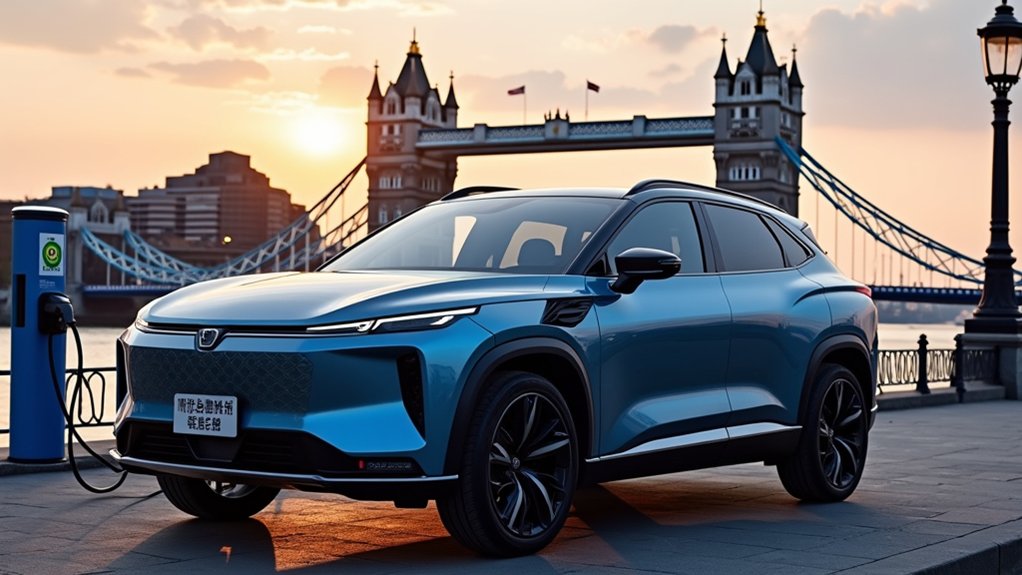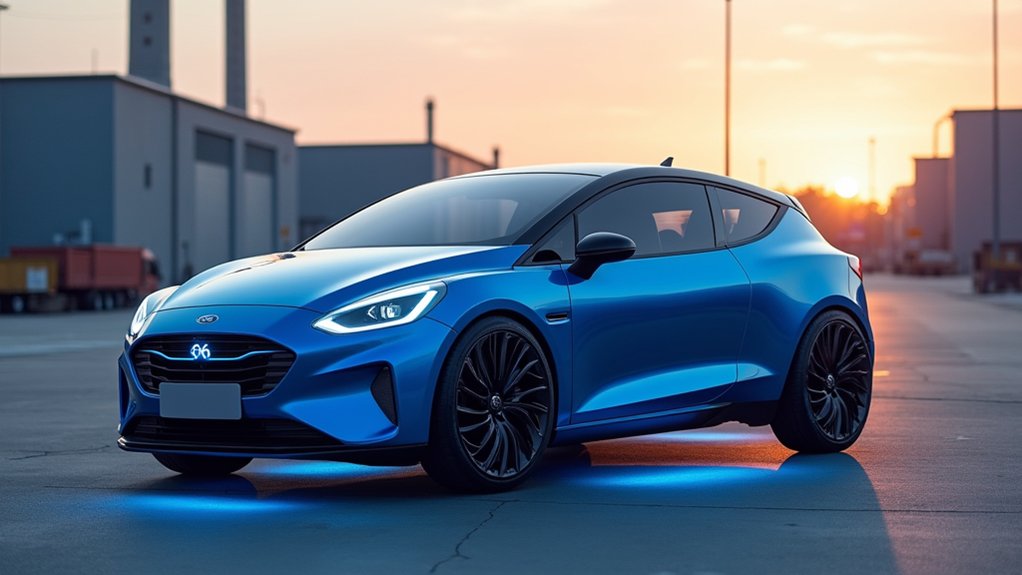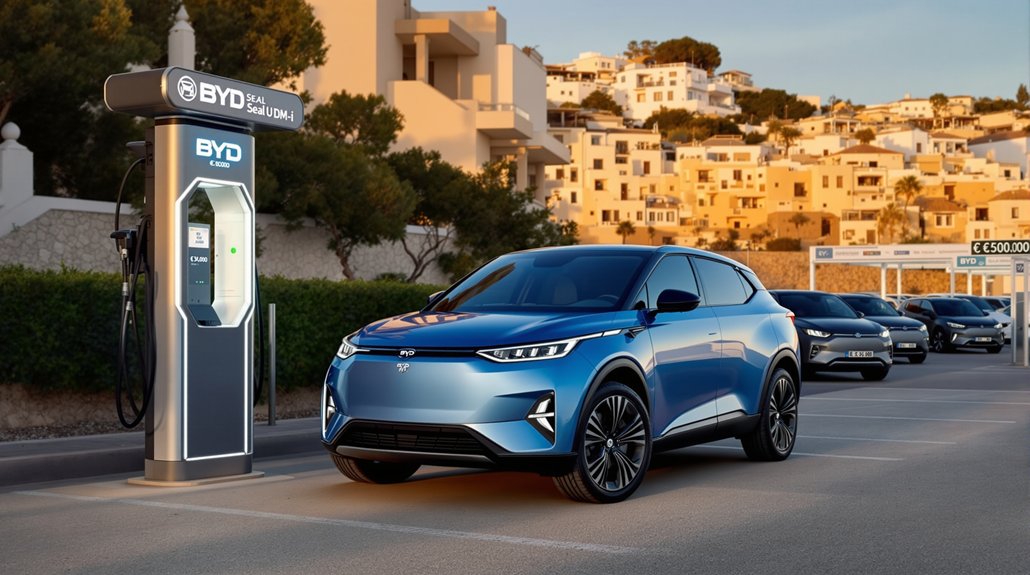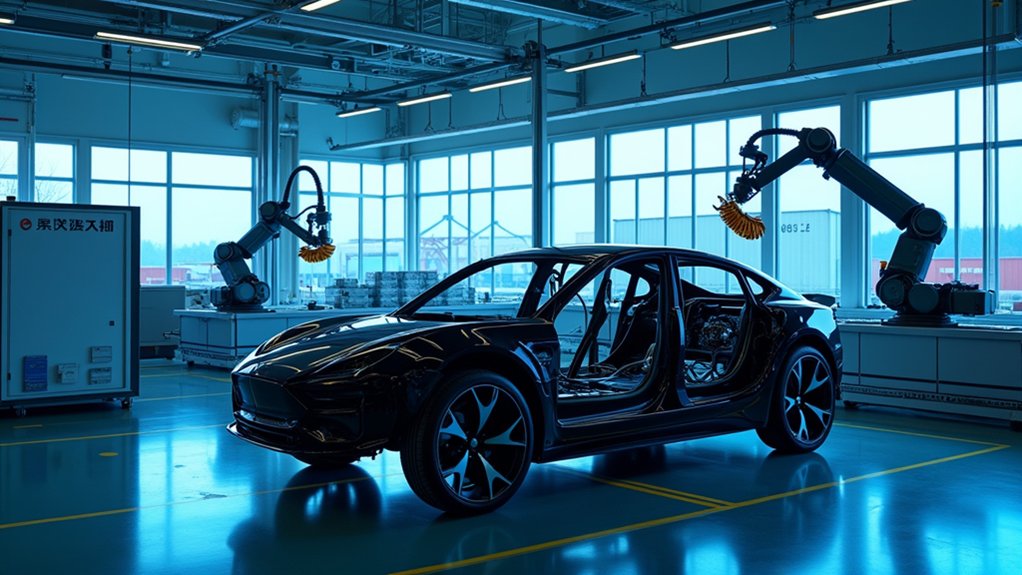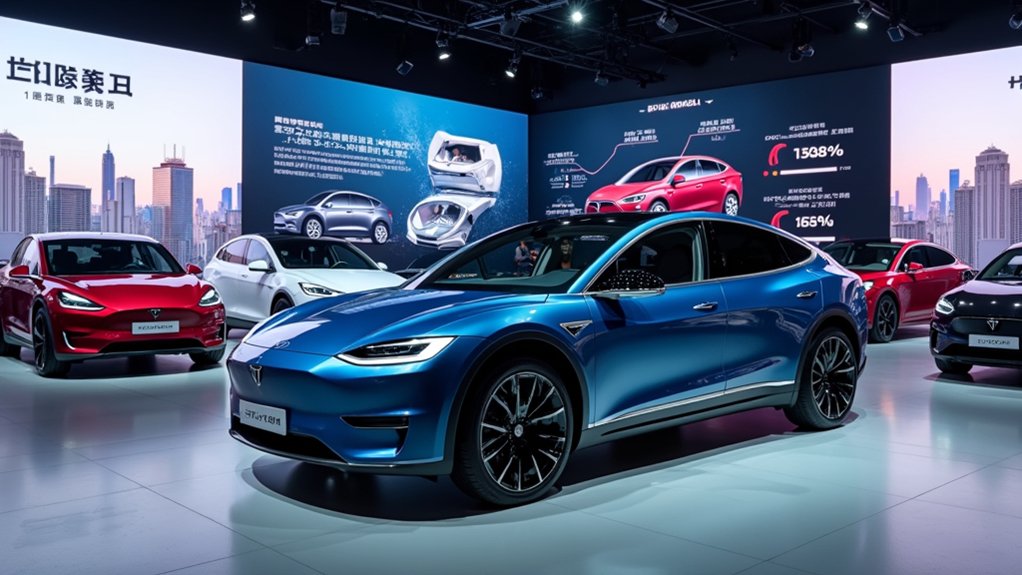Chinese electric vehicle manufacturer Xpeng has stormed into the British automotive landscape, launching its first right-hand drive model—the G6 SUV—in early 2025. The company’s arrival coincides with the UK overtaking Germany as Europe’s top market for EVs, a strategic move that capitalizes on the absence of tariffs that currently hamper Chinese imports to EU countries.
Xpeng’s ambitious plan to open 20 dealerships across the UK signals serious intent in a market hungry for affordable electric options.
The G6 SUV impresses with compelling specifications, including a 354-mile WLTP range that rivals premium European offerings. Its 800-volt supercharging technology enables rapid power replenishment, addressing a primary concern for potential EV adopters. I’ve observed that Chinese manufacturers consistently prioritize cutting-edge technology as their market differentiator, and Xpeng is no exception.
January 2025 saw Xpeng announce strategic partnerships with automotive giant Volkswagen and charging network provider BP Pulse, arrangements that strengthen its position through established infrastructure. Distribution through International Motors Ltd provides the necessary local expertise to navigate the British market’s unique demands.
Xpeng isn’t alone in this eastern invasion. Brands like Omoda and Jaecoo have positioned themselves to “sweep” the UK market with affordable vehicles such as the Omoda E5 electric SUV. The Omoda E5 particularly stands out with its impressive fast charging capability from 30% to 80% in just 28 minutes. These newcomers arrive as Britain pushes toward ambitious electrification targets, creating perfect market conditions for competitively priced alternatives.
The influx of Chinese EVs creates downward price pressure across the segment, potentially accelerating adoption rates while forcing established manufacturers to reconsider their value propositions. Consumers benefit from expanded choice, advanced technology often included as standard, and competitive ranges that eliminate the compromise traditionally associated with affordable electric motoring.
As 2025 progresses, expect further expansion from Chinese manufacturers introducing UK-specific models. This follows the trend we’ve already seen with established Chinese brands in the UK like MG, BYD, Omoda, and ORA, which have successfully gained market share. Growing consumer acceptance, coupled with strategic partnerships across the charging infrastructure landscape, positions these brands for significant market penetration in Britain’s rapidly evolving automotive ecosystem. The integration of vehicle-to-grid technology in these Chinese EVs allows them to function as mobile power plants during peak demand periods, enhancing their appeal in the UK’s sustainability-focused market.
The era of Chinese automotive disruption has unmistakably arrived on British shores.
